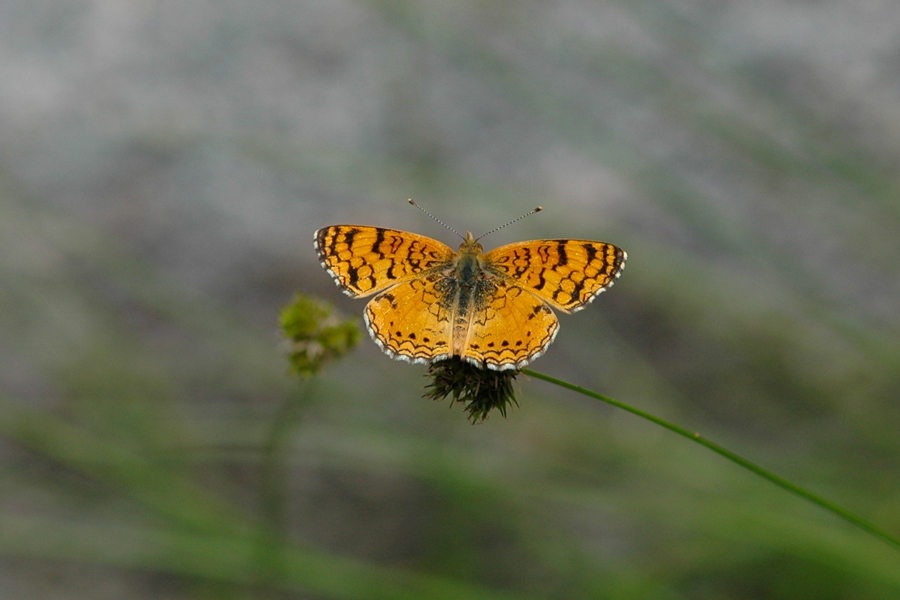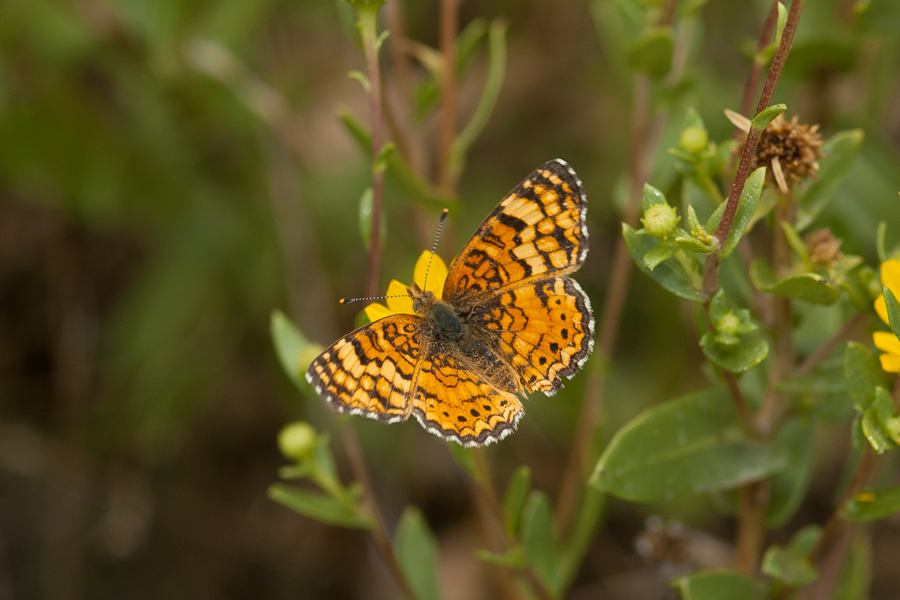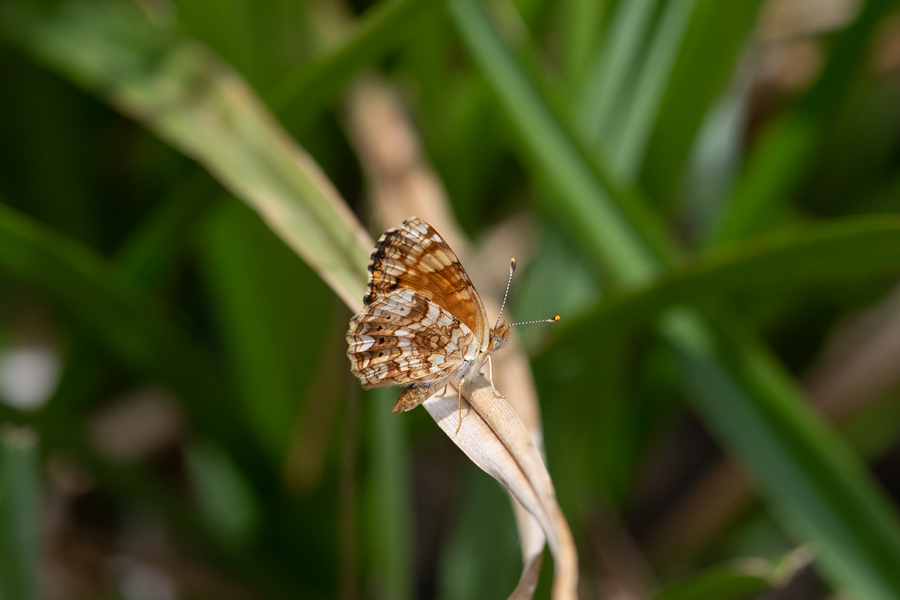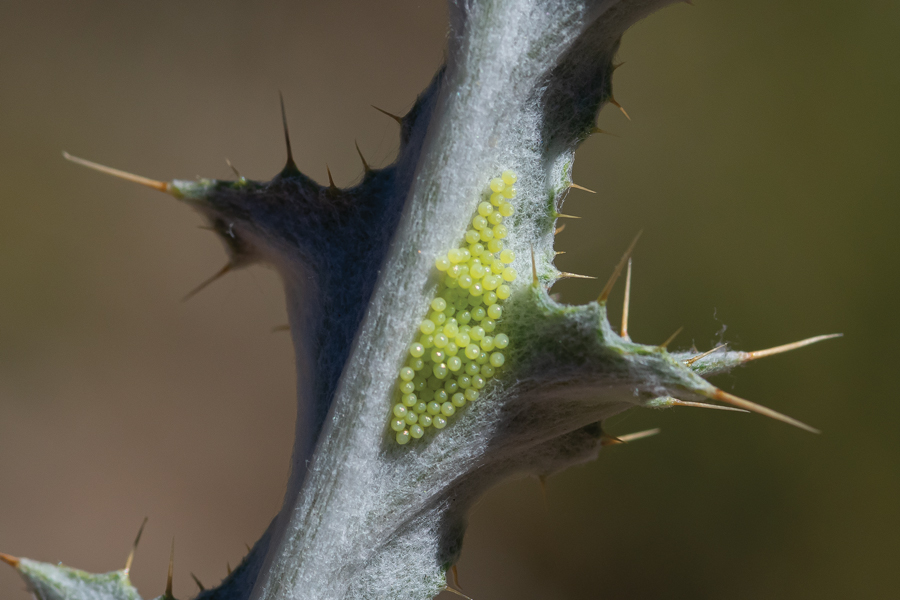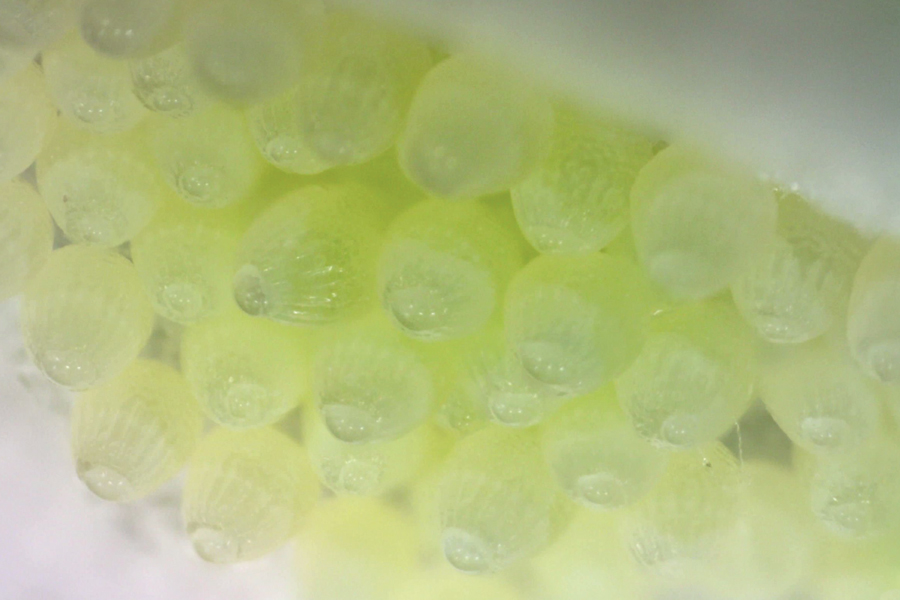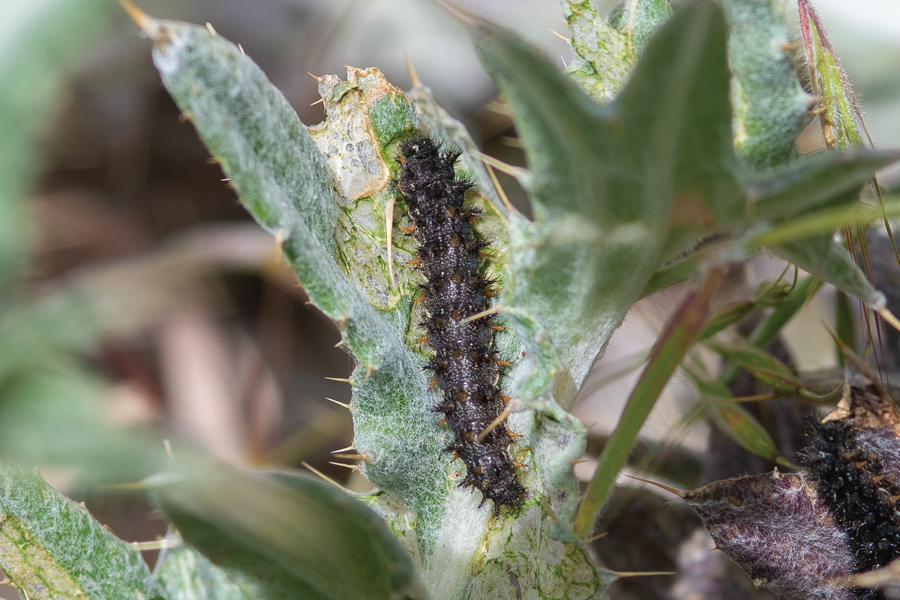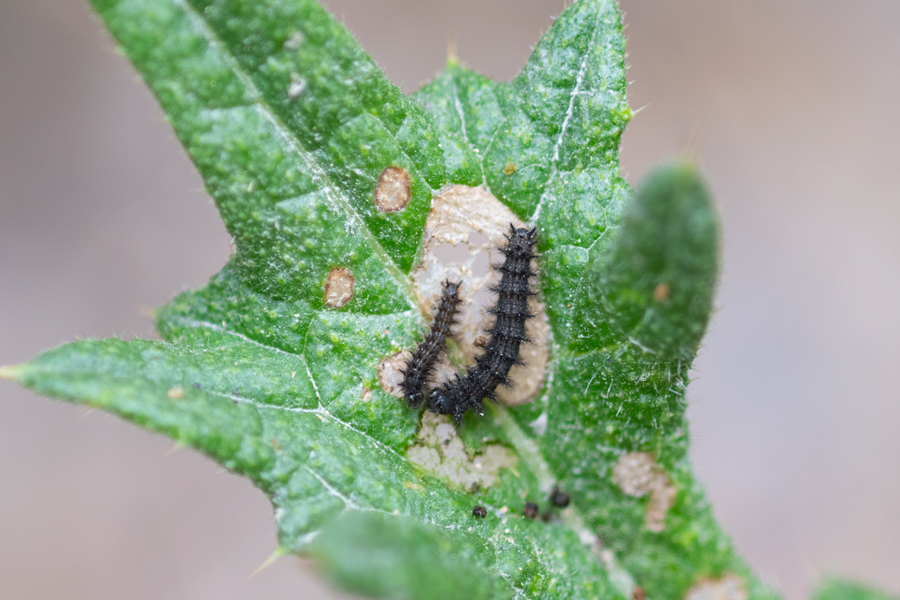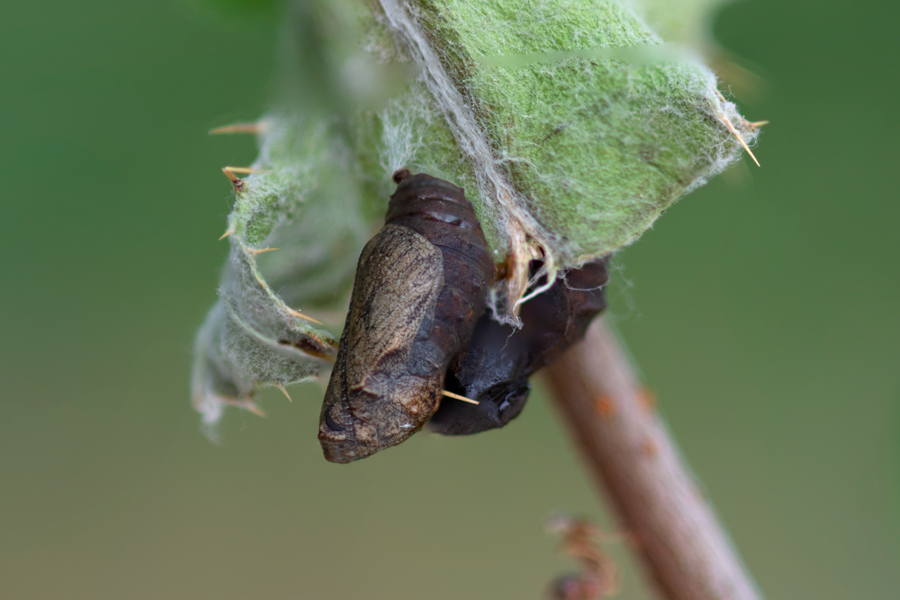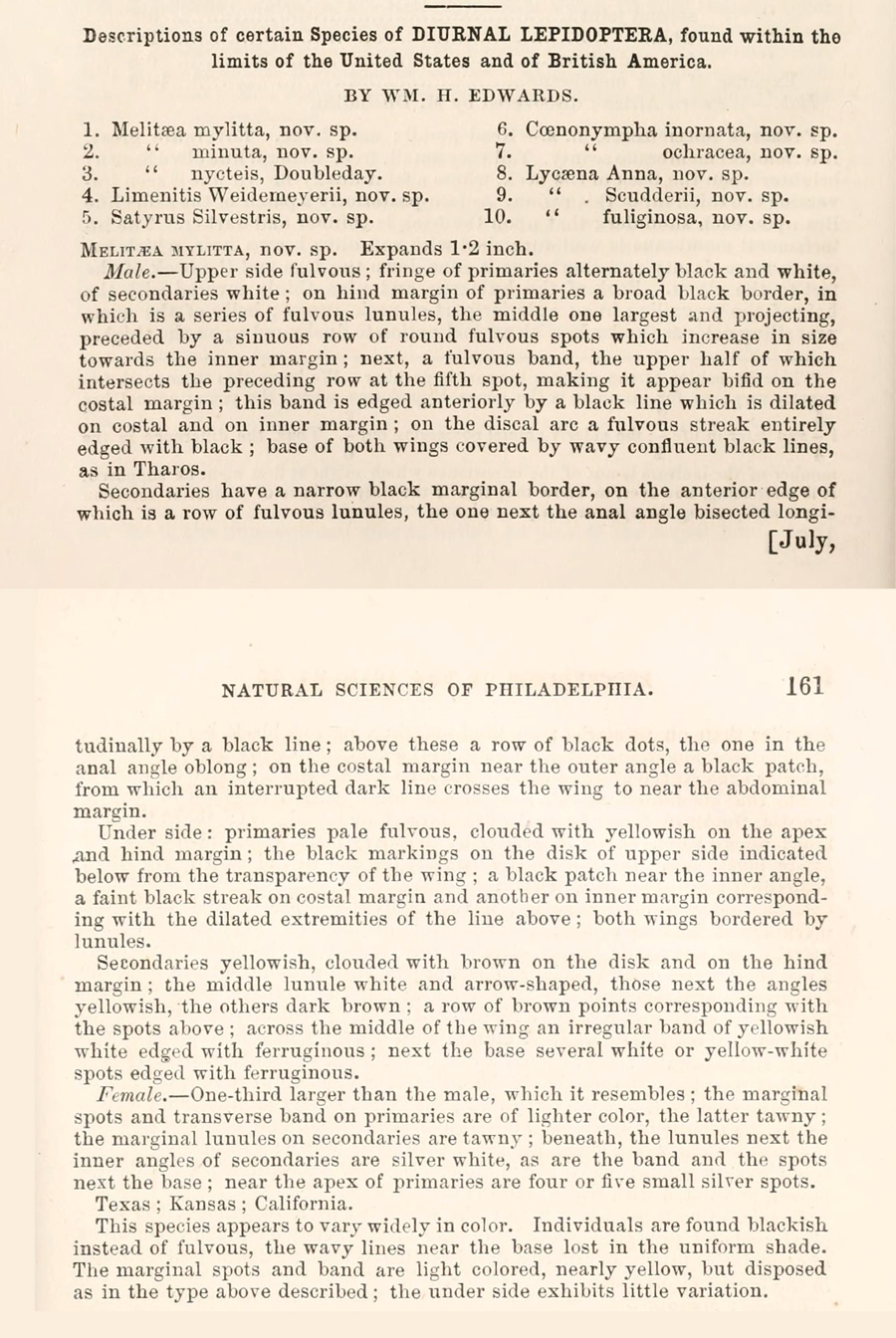Phyciodes mylitta mylitta
Mylitta Crescent
This little nymphalid can be very common wherever thistle is common. The Mylitta crescent flies in multiple broods, and I've seen them late in October - fresh - at over 7000' in Big Bear. Males may seem more common than females because they patrol open areas and pathways such as hiking trails. As with other crescents and checkerspots, they lay their eggs in bunches (on the underside of the leaves), and larvae are gregarious and build silk nests for protection. Caterpillars are easy to find on thistle plants. Cirsium occidentale is a favorite native, and I've seen them on C. scariosum, but they will also use non-native bull thistle (Cirsium vulgare) and others.
A male Mylitta crescent, Phyciodes mylitta, Siberia Creek Trail near Big Bear, June 27, 2006.
This one is a female. Females have noticably more contrast to the wing colors, with the dark brown markings more pronounced. Lake Cuyamaca, September 4, 2011.
Mylitta crescent roadside along Highway 74, not far from Lake Hemet, July 22, 2022.
Eggs are laid in clusters on the underside of the thistle leaf. I counted about 100, which is typical. This was along Cedar Creek Trail in the San Jacintos on October 22nd, 2023. Adults were still common that day.
Same clutch of eggs as above under the microscope at 100x magnification.
I found this and several other caterpillars on thistle along Keen Camp Summit Road in the San Jacinto Mountains. May 15, 2022.
These were among many on bull thistle at a favorite spot in Seven Oaks on August 16, 2023.
A pupa (and one behind it) on a thistle leaf. May 10, 2020.
William Henry Edwards named mylitta in 1861 in the Proceedings of the Academy of Natural Sciences of Philadelphia.
©Dennis Walker
